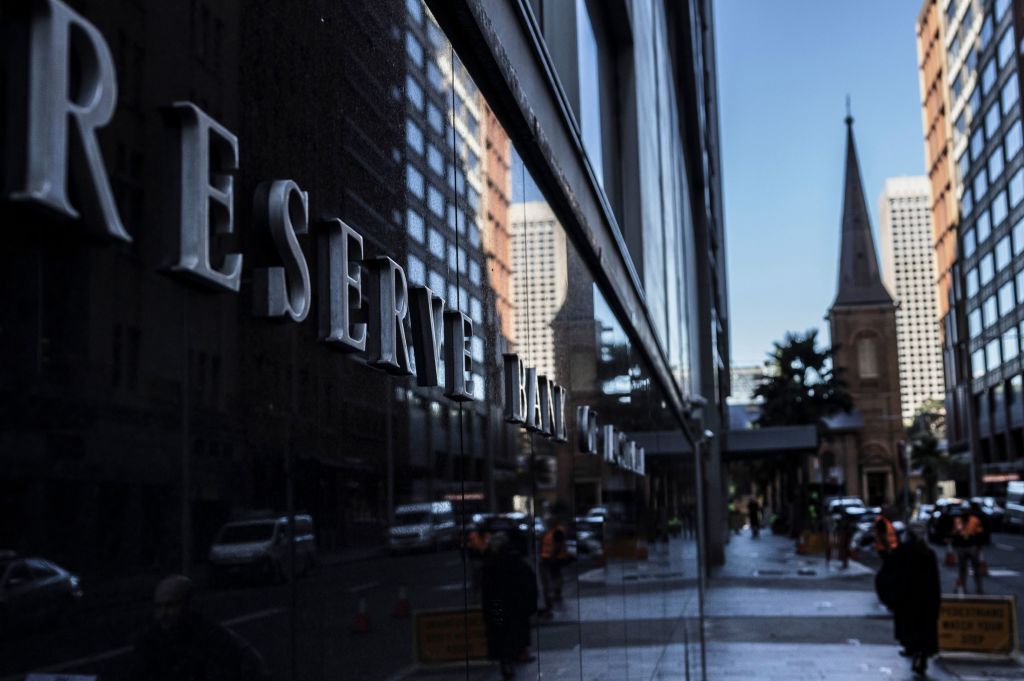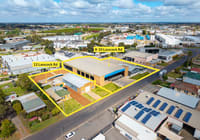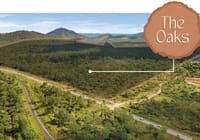
Impact of interest rates on commercial real estate – February 2025
With just a week to go until the Reserve Bank of Australia’s first meeting of 2025, money markets are all but certain an interest rate cut is coming.
The latest ASX data suggests a 95 per cent chance that relief for businesses and home owners will finally arrive on February 18.
With core inflation nearing the target range, speculation is mounting that the RBA will lower the official cash rate from 4.35 per cent to 4.10 per cent at next Tuesday’s meeting.
The weight of Australia’s cost-of-living crisis is sitting on the shoulders of Michelle Bullock, the RBA governor, to make the call following an extended period of high interest rates and a “challenging” 2024 when expectations of relief fell short.
What do the experts think about the rate cuts?
Nicola Powell, head of research and economics at Domain, said a rate cut was likely, given that inflation is at 3.2 percent, just outside the 2-3 per cent target.
“Last time I looked, it was a 95 per cent chance that the RBA was going to cut rates. Now, I’m also of that view,” said Dr Powell.
“I do think the RBA will be really hard pressed not to cut rates next week, and there are reasons for that.”
Powell said one of the reasons behind the near-certain rate cut was the “lag factor” the RBA would have to take into account.
“What the RBA has to focus on is what they expect to happen with that underlying inflation over the next six to 18 months, because monetary policy works with a lag and inflation is cooling now quicker than the RBA had forecast,” she added.
“It puts them in the position where underlying inflation is going to be within the target band within the next 12 months.”
The latest 2024 data shows that underlying inflation dropped from 3.6 per cent in September to 3.2 per cent in December, the lowest in three years.
What is inflation, and how does it affect interest rates in Australia?
Inflation has surged in recent years due to global supply chain disruptions, high energy costs, and strong consumer demand.
With high inflation, businesses and consumers have less purchasing power, which can lead to economic downturn.
Inflation is defined as the rate at which the general cost of prices for goods and services rises over time, a measure known as the Consumer Price Index (CPI).
Compared with some of the world’s other central banks, which started lowering borrowing costs last year, the Reserve Bank of Australia is slower to cut rates.
“The RBA raised rates later than our global peers,” said Powell.
“They’ve cut rates later. They are cautious. They don’t move as quickly as the UK, US and Canada, which have already seen rate reductions coming through. So I think when they do move, they will move in a cautionary manner.”
Who benefits from high interest rates?
According to Powell, the high rates “benefit anybody with a pool of cash somewhere”.
“I think the cash rate environment has been a really challenging one for businesses, for consumers,” she said.
“I mean, the only person or group of people it has been benefiting is those that have savings. And you know, that’s really kind of that older demographic.”
For those who have debt, it’s been a “challenging” time, Powell added.
“2024 was meant to be the year that brought rate cuts, and it didn’t. And we’ve been in this environment for longer, which – for anyone that has debt – is a really challenging environment.”
What is the RBA’s inflation target?
The RBA likes to keep inflation within its 2–3 per cent target range.
In basic economics, the RBA raises interest rates when inflation is high and reduces them when inflation is low or falling.
This reduction in inflation has made bond market investors almost certain that the RBA will cut rates for the first time since November 2020 next Tuesday.
What can we expect on February 18 when the RBA makes its decision?
John Burger, a project and infrastructure advisory partner at BDO, an international network of public accounting, tax and advisory firms, said a rate drop wouldn’t be dramatic.
“When the RBA makes its decision, we don’t expect a sharp decline,” he said.
“The initial easing will likely signal the start of an easing cycle, which could provide some confidence.
“However, commercial market investors will remember that an easing cycle usually indicates a weaker economic outlook, so we don’t anticipate a strong market reaction right away.”
How does the jobs market affect the RBA decision?
Powell said it was important to also note the other side of the RBA board member’s decision-making – considering the strong jobs market and low unemployment rate.
“We’ve still got a low unemployment rate. It’s risen from its ultra-low, but it’s still low, at 4 per cent. We’ve got high levels of workforce participation, but overall wage growth is also slowing significantly.
“So I think that also underpins that narrative that the RBA will cut rates. And the thing is, if they don’t cut rates and they wait too long, that is a risk to our economy, and then a risk to inflation, going below, over… and that has no benefit to anybody.”
Will Donald Trump affect rates in Australia?
The RBA is certain to take Donald Trump’s presidency into account, but its main focus will be on the domestic economy, Powell added. She said that although there was a theory that his actions could add inflationary pressure to Australia, it remained to be seen.
“The inflation data is so fresh because it was only released at the end of January, and that will be that core piece of information that they’ll be basing their judgments upon.”
How rising interest rates impact the Australian commercial real estate market in 2025
Burger said although rising interest rates were influencing the Australian commercial real estate market, several other factors beyond rates were also at play.
“These include the future of commercial office spaces, rental growth and affordability, and construction costs,” he said.
“Investors are still navigating what constitutes a fair, risk-adjusted return for commercial real estate compared to other investment asset classes.”
Vanessa Rader, head of research at Ray White Commercial, agrees, saying the market was looking beyond just finance this year.
“Expectations surrounding interest rate reductions will likely open up more appetite for the private investor market, however finance is only one piece as buyers are looking for quality value-add opportunities in this current market,” she said.
Powell said she believed rate relief was needed for business owners.
“If you’re a business owner, it’s a higher cost of labour, you know, because we’ve seen wages also grow at a quite a strong rate. It’s coming in all directions, and I think that that pressure will be a welcome relief for many once we see it being reduced”.
What commercial real estate investors need to know about interest rates in Australia
A rate cut won’t immediately ease financing for commercial real estate in Australia.
Burger said major banks remain cautious but offer the cheapest loans.
Meanwhile, he said that second-tier and alternative lenders face growing risks, and cheaper capital may help fill some funding gaps.
Powell agreed a cautionary approach from the RBA was expected.
“I don’t think we’re going to see board meeting after board meeting where they’re going to be cutting rates. I think we’ll probably see the move in February and the next board meeting, which is April 1, they will probably hold, if they do cut in February, they’ll probably hold the next one. And if they don’t cut next week, though, they will cut the next one.”
Meanwhile, Rader said the cost of funds was just one piece of investment.
“Looking at cash flows, opportunity, development, tenant quality is all very important. Location is becoming more important with the past investors more cash flow driven than with a long term view,” she said.
How interest rates affect commercial property financing in Australia: A 2025 outlook
In 2025, the most significant positive impact of interest rates on commercial property financing will likely be felt in the institutional residential sector, Burger said.
“This sector is more sensitive to financing costs due to thin margins and long-term investment horizons,” he said.
“A rate cut will likely be welcomed by those focused on build-to-rent, purpose-built student accommodation, or co-living investments. These sectors are expected to continue attracting capital away from traditional commercial sectors, as we’ve seen in recent years.”
Burger also predicts commercial property values will finally stabilise this year.
“After a period of significant adjustment, any remaining gaps between valuations and market appetite should start to close.”
When examining the impact of financing, Rader said private equity was a little more challenging going forward this year.
“Many are revising down returns, which may see greater assets come to market, but banks are still lending – but again location specific and asset specific. So, there’s a greater focus on quality offerings with strong outcomes.
“Smaller buyers who look to diversify their investments will continue to look to commercial as an alternative, the growth of buyers agents testament to this… so interesting times.”
When are the RBA meetings and announcements about interest rates?
The Reserve Bank’s first board meeting is scheduled for February 17 – 18, 2025.
Board members determine whether inflation is low enough to lower the cash rate.
Any change in the cash rate takes effect the following day, after the announcement on February 18.
The much-anticipated outcome will be announced at 2.30pm on February 18, the second day of the board meeting, and the governor will hold a media conference at 3.30pm.
Will the interest rate be cut again in 2025?
If there’s no rate cut in February, it’s likely to be April 1 instead. These are the dates board members meet on for the year:
- February 17-18
- March 31-April 1
- May 19-20
- July 7-8
- August 11-12
- September 29-30
- November 3-4
- December 8-9
What exactly is the cash rate, and what does it mean?
The RBA adjusts the cash rate to influence economic activity and manage inflation.
“The cash rate is the interest rate on unsecured overnight loans between banks,” according to the RBA.
The current cash rate is 4.35 per cent and has been steady for just over a year.
From a very low cash rate of just 0.25 per cent at the start of the pandemic in March 2020, it started climbing again on May 4, 2022.
With a mix of incremental rises and a bout of holding tight, the cash rate has held steady without any changes since December 2023.










